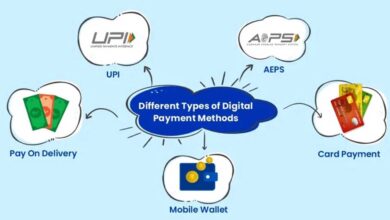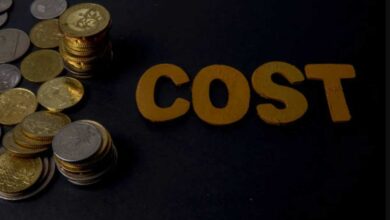
A job as a social worker is a great choice. Many people have proposed solutions to the student loan conflict. Some politicians have suggested that all student loan borrowers have $50,000 of their Credit forgiven.
While many social workers begin their careers with a bachelor’s degree, clinical social workers must have state licensure and an MSW. After completing their studies for 4-6 years, numerous social workers begin their careers with a significant amount of student loan debt.
In fact, more than 80% of social workers with a master’s or bachelor’s degree, and 65% of those with a doctorate, graduate with student debt. Compared to the average debt load of $29,200 for all degree holders, the average debt load for social work graduates varies from $32.000 to $42,000.
While the interest for social workers keeps growing, particularly in state and federal government agencies, the wage in the field varies significantly. The best earning social workers receive more than $82,000 per year, while the lowest receive less than $32,000. This guide explains everything about social workers’ loan forgiveness that will be helpful for many people.
National Choices of Social Workers Student Loan Forgiveness
If you are a social worker who is having difficulty making your student loan remittances, there are some great ways. So many programs may make you qualified for student loan forgiveness. Let’s look at your choices to know if you meet the criteria for loan forgiveness.
Public Service Loan Forgiveness
If you work for a state, federal, or local government or a nonprofit organization in the United States, you may be qualified for the Public Service Loan Forgiveness Option. Continue reading to know if you are eligible. After you have made 120 eligible monthly payments under a qualified repayment plan while working full-time for a qualified employer, the PSLF Program will forgive the remaining balance on your Direct Loans.
How can you know if you’re eligible for PSLF?
United States Department of Education says that you should work full-time for one of the below entities:
- Any level of governmental agency (state, local, or federal)
- Nonprofit entities that are tax-exempt under Internal Revenue Code Section 501(c)(3)
- Working as a full-time Peace Corps or AmeriCorps volunteer also qualifies you for the PSLF Program.
PSLF is not available to the following types of employers:
- Partisan political institutions
- Labor unions
- For-profit institutions, including for-profit government contractors
For your employment to qualify toward PSLF, you must be actually employed by an eligible employer. If you work for a company that has a contract with a qualified employer, your employer’s status determines whether your employment counts for PSLF. For example, if you work for a for-profit contractor collaborating with an eligible employer, your earnings do not qualify toward PSLF.
Suppose you operate with a not-for-profit company that is not tax-exempt under Internal Revenue Code Section 501(c)(3). In that case, it can still be regarded as an eligible employer if it offers specific types of qualifying public services.
Income-Based Repayment Plan
An income-based repayment plan reduces student loan debt by establishing a monthly repayment amount arranged on family size and income. The federal government has set up four income-based plans: Revised Pay As You Earn Repayment Plan, Pay As You Earn Repayment Plan, the Income-Contingent Repayment Plan, and the Income-Based Repayment plan.
These four plans differ in terms of eligibility criteria, loan types, and repayment period lengths that meet the repayment criteria. The payment amounts for these income-based plans range between 10%-20% of discretionary income. Monthly repayment amounts for all plans may fluctuate if the family size or earnings start changing from one year to the next. Loans that have been defaulted on do not meet the requirements for repayment under any of these plans.
National Health Service Corps Loan Repayment
The NHSC Loan Repayment program is open to licensed clinical social workers. The Corps grants a maximum of $50,000 for two-year full-time job performance to medical professionals who are actually employed at an NHSC-approved facility or in a known healthcare professionals shortage area. After the first two years, attendees who have unpaid student loans may apply yearly to have their loan repayment extended if they keep working at the eligible placement.
Because funds are limited, the Corps prioritizes LCSWs from underprivileged areas or those who are most likely to remain employed in a healthcare shortage area. Commercial bank loans, unpaid federal student loans, and reasonable academic and living expenses that have not been consolidated with other non-educational loans are eligible for repayment under this program.
State-Based Student Loan Forgiveness
Several states offer student loan debt forgiveness programs for eligible social workers or, in collaboration with the government, the State Loan Repayment Program (SLRP). The amount of money awarded is not as large as in student loan forgiveness programs. However, one of these student loan repayment programs may be beneficial for social workers who have a lower level of student loan debt.
Perkins Loans Discharge and Cancellation
Although the Perkins Loan option terminated in 2017, you may still be eligible for Perkins Loan discharge or cancellation as a social worker if you took out Perkins Loans before the program stopped.
If you meet the requirements, you may be able to have your Perkins Loan debt forgiven entirely. If you want to submit an application, you must reach out to the financial assistance department at your approved loan servicer or school. Do you know what the differences between forgiveness, discharge, and loan cancellation are? All three words result in the same thing: you are no longer accountable for paying down your student loan debt, in whole or in part.
However, each one uses significantly different circumstances
- Loan cancellation and forgiveness are terms that refer to your loan debt being forgiven as a result of your job selection.
- A loan discharge is when a student loan debt is forgiven due to unforeseen situations (e.g., school closing and disability).
Although the result is the same, it’s essential to know the variance.
Indian Health Service Loan Repayment
Another federal debt payback plan is the Loan Repayment Program for the Indian Health Service. IHS provides grants to pay off student loan debt for qualified social workers, to bring healthcare professionals to American Indian and Alaska Native communities.
For a two-year commitment, the debt payback program offers up to $40,000 in cash. You can prolong your repayment plan if your student loan debt isn’t paid off by the end of your term. For each additional year of service, you’ll receive one year of debt payback until your eligible loans are paid fully.
Is Student Loan Forgiveness a Good Choice for You?
Maybe you’ve looked through the many student loan forgiveness alternatives and determined that none of them are appropriate for you. Perhaps you’d like to apply for student loan forgiveness but aren’t eligible for PSLF or any of the other programs described above. Furthermore, some of the social workers do not prefer to work in impoverished regions.
You may only be a part-time social worker, making you unqualified for many of these loan forgiveness options. Additionally, if the college you are studying in or have studied in is going through a lawsuit like Corinthian Colleges Lawsuit, you might be eligible for student loan forgiveness. It is best to do thorough research as much as possible in order to see which criteria you fall into.







